Hands down the best way to cook salmon fillets are in a cast-iron skillet or non-stick frying pan. This cooking method ensures crispy skin and juicy flesh all the time when done correctly.
Served with simple garlic herb butter, mashed potatoes and your favourite way of cooking broccoli makes the perfect lunch or dinner.

Salmon fillet vs salmon steak
It's important to realise that a salmon fillet and a salmon steak are two different cuts.
Salmon steak is a cross-section cut with two pieces of fillet still attached to the spine.
It requires a touch more skill to cook and we will look at those another day, but the principles are very much the same as for cooking salmon fillets.
Salmon fillet, on the other hand, is a boneless cut with the flesh removed from the spine in a lengthways cut.
Fish protein explained
Fish is a protein-rich food source just like meat.
However, the proteins in fish are much shorter and the collagen holding together the muscle fibres are not as tough as with beef or chicken.
This means that fish requires less cooking time.
Fish will be cooked at a lower temperature compared to meat.
Fish proteins start coagulating at 42°C or 107°F. By the time it reaches 60°C or 140°F the fish will dry out and be overcooked.
The trick is to get the internal temperature of the fish just right at around 52°C or 125°F. I will show you how.
Why this way
Salmon with crispy skin and succulent tender flesh is the only way you should want to eat it.
This recipe does exactly that and we even went a few steps beyond and cooked our salmon fillets with garlic, lemon and parsley butter.
The result is phenomenal. Simple, quick and perfectly cooked.
Juicy in the middle, slightly pink and the perfect crispy skin.
The best tool to do this is in a well-seasoned cast-iron skillet or non-stick frying pan.
Useful equipment

Cast Iron Skillet

Wooden Chopping Board

Temperature Probe
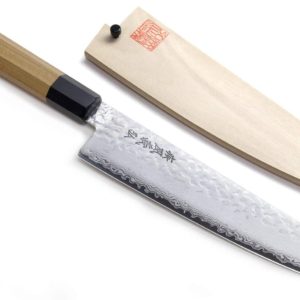
Gyuto Japanese Chefs Knife
Ingredients
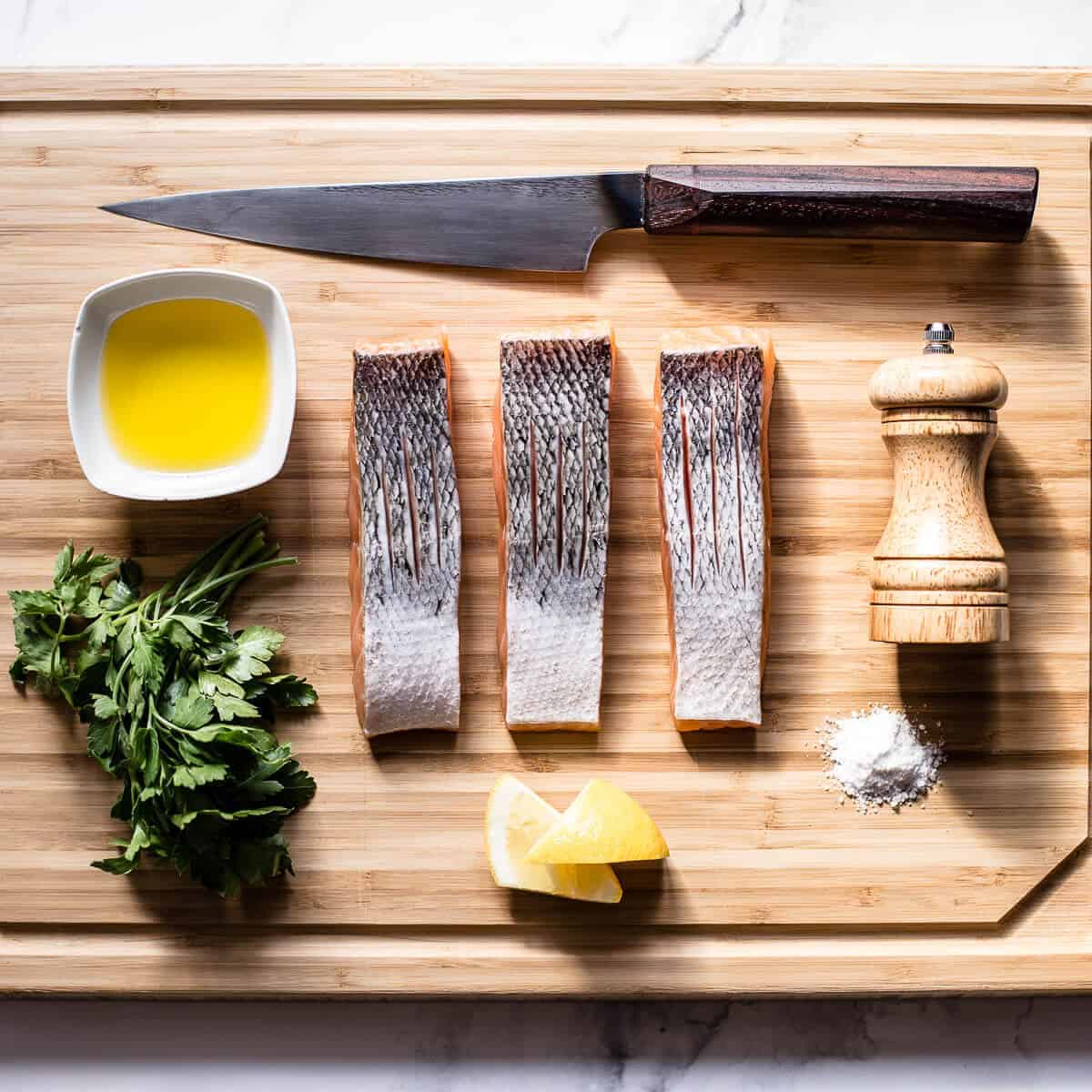
- Salmon - Fresh fillet is best. If using frozen make sure to defrost it in the fridge before cooking.
- Fat - Olive oil or neutral frying oil. Don't fry in butter it will burn.
- Extras (Optional) - Parsley, lemon and butter for making a quick pan sauce.
Instructions

- Before you start cooking make sure the skins of the salmon fillets are dry. Moisture is a killer when it comes to frying fish. It will make the skin stick and oil will splatter everywhere as the moisture hits the pan. So make sure it's dry. Just take a piece of kitchen towel and dry the surface well before frying.
- Heat the pan with a generous amount of olive or cooking oil. When the oil is hot and starts to smoke, it's time time to add the fish. Season the salmon liberally skin side only. Carefully place the salmon fillet skin-side-down, away from you so the oil doesn't splat, into the hot pan and cook 1 minute on high heat.
- Turn the heat down to medium and keep frying skin side down for about 3 minutes and then flipping and cooking 1 minute on the flesh side. Depending on the thickness and size of your salmon fillets, times may vary.
- When perfect the salmon fillets should read 42°C or 107°F . Remove from the pan and set aside. The residual heat will keep cooking the fish and the temperature will rise till about 50°C or 122°F. If you do not have a temperature probe. Then insert the tip of a knife into the thickest part of the fillet. Touch the tip of the knife. It should be lukewarm but not hot.
- Remove the fish from the pan and set it aside. Place 50 grams of butter into the pan over medium heat. Cook for about 1 minute just so the butter starts to bubble. Remove the pan from the heat.
- Squeeze in a touch of lemon juice. Add the chopped parsley and a fresh grating of black pepper. Put the salmon fillets skin side up back into the pan, glaze with a bit of butter and serve immediately.
Serving suggestions
Sides
Salads
- Moroccan eggplant zaalouk
- Baked baby potato and red onion salad
- Spiced couscous
- Sweet miso baked eggplant
Tips for success
- Buy the freshest salmon.
- Use a temperature probe to monitor the internal temperature of the fish as it cooks.
- Always dry the fish well on paper towel before frying.
- Cook on the skin side most of the time to avoid the flesh side from drying.
- Remove the salmon from the pan and let it rest before the temperature reaches 45°C or 113°F. You can always cook it more but you can never uncook it.
Frequently asked questions
By reaching an internal temperature of 52°C or 125°F measured on a kitchen thermometer.
In this recipe, we did garlic, lemon and parsley butter. Try and keep sauces light and fresh as salmon is a fatty fish and needs something zingy for balance. Try gremolata, salsa verde or tapenade. White wine cream sauce is also delicious with pan-fried salmon.
Don't. You will overcook the outside while the inside will still be frozen or raw. The safest way is to thaw fish in the fridge overnight and cook when fully defrosted.
I have written a recipe and made a video covering the topic of curing salmon.
Every 100g of skin-on salmon fillet contains 104 calories.
Related recipes
This site contains affiliate links. I may earn a tiny commission on qualifying purchases at no extra cost to you. By bookmarking these links you help support the upkeep of this site.
If you found this post helpful or have learned something, comment, subscribe, and follow me on social platforms for more tasty recipes.
Recipe
How to cook salmon fillet in a pan
Ingredients
- 3 salmon fillets - note 1
- 50 g neutral oil - note 2
- 50 g butter - note 3
- 10 g parsley - finely chopped - note 4
- 1 lemon - note 5
- salt and pepper to taste
Instructions
- Before you start cooking make sure the skins of the salmon fillets are dry. Moisture is a killer when it comes to frying fish. It will make the skin stick and oil will splatter everywhere as the moisture hits the pan. So make sure it's dry. Just take a piece of kitchen towel and dry the surface well before frying.3 salmon fillets
- Heat the pan with a generous amount of olive or cooking oil. When the oil is hot and starts to smoke, it's time time to add the fish. Season the salmon liberally skin side only. Carefully place the salmon fillet skin-side-down, away from you so the oil doesn't splat, into the hot pan and cook 1 minute on high heat.3 salmon fillets, 50 g neutral oil, salt and pepper to taste
- Turn the heat down to medium and keep frying skin side down for about 3 minutes and then flipping and cooking 1 minute on the flesh side. Depending on the thickness and size of your salmon fillets, times may vary.
- When perfect the salmon fillets should read 42°C or 107°F . Remove from the pan and set aside. The residual heat will keep cooking the fish and the temperature will rise till about 50°C or 122°F. If you do not have a temperature probe. Then insert the tip of a knife into the thickest part of the fillet. Touch the tip of the knife. It should be lukewarm but not hot.
- Remove the fish from the pan and set it aside. Place 50g of butter into the pan over medium heat. Cook for about 1 minute just so the butter starts to bubble. Remove the pan from the heat.50 g butter
- Squeeze in a touch of lemon juice. Add the chopped parsley and a fresh grating of black pepper. Put the salmon fillets skin side up back into the pan, glaze with a bit of butter and serve immediately.10 g parsley, 1 lemon
Notes
- You can also use this method to cook other types of fish fillets. Whenever buying fish make sure it's as fresh as possible. Good quality fresh fish does not smell fishy, the flesh is firm and not slimy and the colour is vibrant.
- Choose your favourite just make sure it has a high smoking point.
- Adding butter is optional. If you want to keep it healthier simply add a bit of olive oil at this stage or skip the step.
- Use any other herb or a mixture of herbs. This step is also optional and you can simply skip it if you don't want the herbs.
- Citrus goes well with fish. You can substitute the lemon for lime or if you have something against sharpness simply leave it out although adding it is highly recommended.
- If you do not have a good pan use a piece of baking parchment to fry on. Placing it into the pan and follow in the instructions as described
- I highly recommend you get a kitchen thermometer as it is an inexpensive invaluable tool we constantly use in the kitchen.
- To cook a salmon steak on the bone, use the same temperature guide and measure the temperature close to the bone.












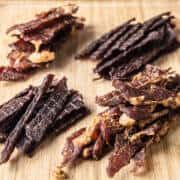

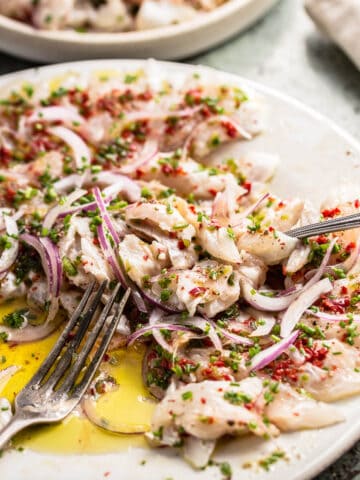



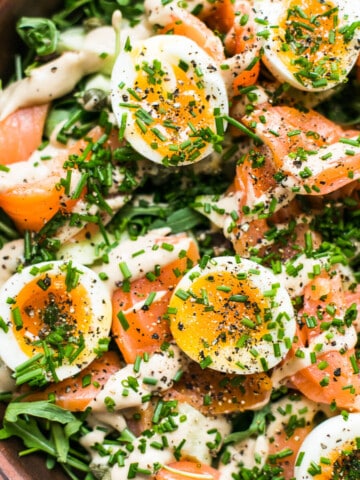
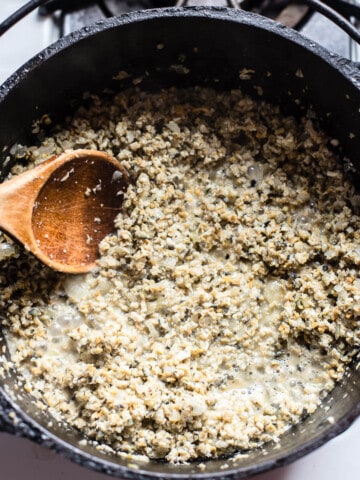

Leave a review or ask any question